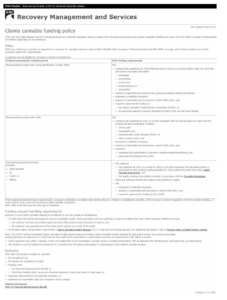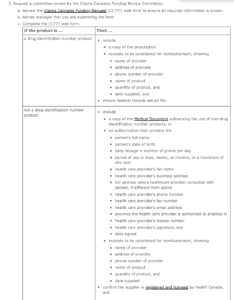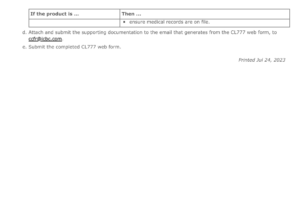ICBC likes to say if you rear end someone you are at fault. But the law is more nuanced than that. Reasons for judgement published this week shed light on this reality.
In today’s case, (Virk v. Helm-Northover) the Plaintiff was a passenger in a vehicle involved in a crash. She was faultless. Who was to blame was the issue. In short a cyclist was travelling in a protected bike lane. Behind him were two vehicles. Moments after initially signaling the cyclist made an “abrupt” left hand turn. The lead motorist, not paying enough attention to what was unfolding before her, assumed she could pass the cyclist before he turned but then slammed on her brakes in response. The rear motorist, failing to pay attention at the crucial moment, struck the lead motorist who suddenly stopped. Fingers were pointed in all directions.
In finding all three were to blame, with a split of 50% to the rear motorist, 30% to the cyclist and 20% to the lead driver Mr. Justice Thompson provided the following reasons:
[26] I find that Mr. Fisher was not signalling and did not shoulder check in the
second or two before he made his lane change. I think it highly likely that if he had
shoulder checked or signalled before his lane change, the plaintiff would have
noticed these movements. And, if he had shoulder checked at that time, he would
have seen the Helm-Northover and Virk vehicles travelling in the centre lane at or
near the speed limit, and the strong likelihood is that he would not have moved into
their path.
[27] While I have found that Mr. Fisher was not signalling in the second or two
before he changed lanes, I accept that he conducted a shoulder check and was
signalling for an extended time beginning when he was at the Carnarvon
intersection. I accept this part of Mr. Fisher’s evidence because it corresponds with
admissions made by Ms. Helm-Northover in her discovery evidence. I find that
Ms. Helm-Northover first saw his signal from a good distance away from when he
made his lane change, and she wanted to catch up and pass the cyclist.
Consequently, she maintained her speed. She assumed that the cyclist would wait
for her to pass before moving into the centre lane. I find that if she had slowed her
car while checking the accuracy of her assumption about the cyclist’s intentions, she
would not have had to stop at all, never mind make a full-on emergency stop.
[28] Finally, I conclude that it is more likely than not that if Ms. Helm-Northover
had slowed her vehicle, instead of carrying on at speed and then performing an
emergency stop, the collision would not have happened. Regardless of Mr. Virk’s
temporarily diverted attention, given his estimate of a few seconds distance between
his car and the lead car, which I accept, he would have had sufficient time to brake
without striking a vehicle in front of him that was slowing or gradually stopping.
[29] Based on these findings, Mr. Fisher’s departure from the standard of care of
the reasonable cyclist was to make an unsafe lane change which was rooted in his
failure to conduct a timely shoulder check. It was a marked departure from the
standard of care to change lanes into the path of the vehicles to the centre lane
when they were so close as to require an emergency stop to avoid running him
down.
[30] I also conclude that Ms. Helm-Northover was negligent. This is not an “agony
of the moment” case: the cyclist’s lane change ought to have been anticipated, and
her error was not in how she reacted once she appreciated the hazard. In fact, her
emergency stop likely avoided catastrophic consequences for Mr. Fisher. However,
earlier in the sequence of events, Ms. Helm-Northover concluded that the cyclist
planned to move into the centre lane, yet she carried on driving at about the speed
limit in an effort to catch and pass him. She assumed the cyclist would wait for her to
pass by. Having appreciated the real possibility of this slower-moving vehicle moving
into her lane, she failed to react with reasonable care for this potential hazard. She
should have slowed her car and not put herself in a position where the only way to
avoid a potentially catastrophic collision with the cyclist was full emergency braking.
This emergency action was necessitated by circumstances that could be anticipated
or expected. Moreover, she should have been aware that there was a vehicle behind
her, a situation that exacerbated the risk of deciding to catch up and pass the cyclist.
It is one thing to make a sudden mid-block stop when one knows that there are no
following vehicles, but it is another to make a sudden stop when one is unaware of
what is happening behind. Of course, having made the decision to carry on at speed
to attempt to pass by the cyclist before he made his lane change, Ms. Helm
Northover narrowed her options to one when the cyclist changed lanes in front of
her: i.e. an emergency stop, regardless of any traffic behind her.
[31] Mr. Virk’s negligence is obvious. He was a few seconds behind the lead
vehicle, and if he had been paying proper attention, I find the cyclist would have
been visible to him at some point in the many blocks of travel leading up to the site
of the accident. If he had seen Mr. Fisher and appreciated the apparent fact that the
two motor vehicles were closing on the bicycle, I doubt that Mr. Virk would have
chosen to pay attention to the radio instead of the traffic ahead of him. Regardless, it
was a serious and substantial departure from the standard of care to take his eyes
off the road ahead when he was following another car, and to have failed in his
obligation to bring his car to a stop before it collided with the vehicle ahead.




